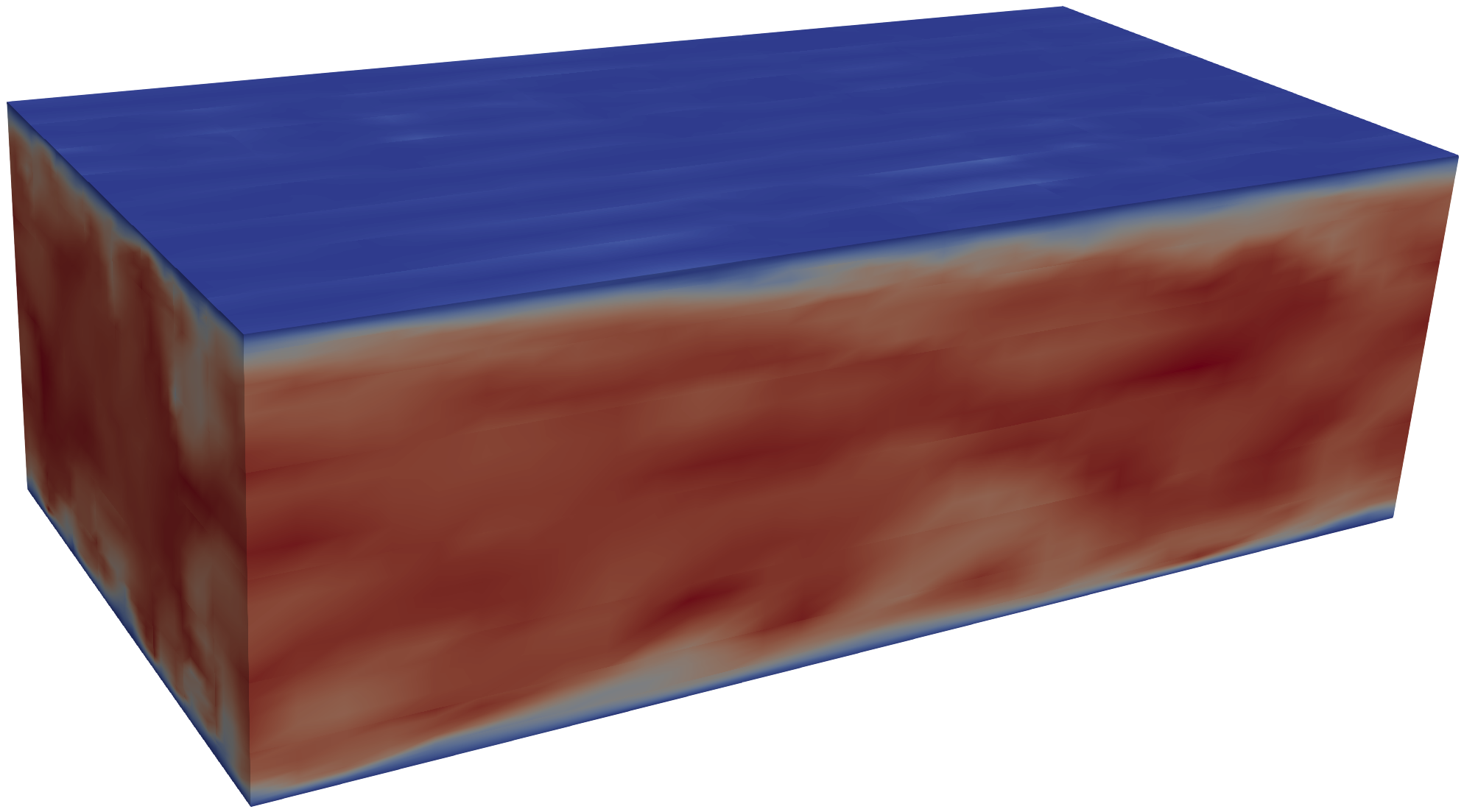Structure-preserving discretizations for flows

For the simulation of incompressible flows (and related problems) we considered discretizations based on an \(H(\operatorname{div})\)-conforming (i.e. normal-continuous) higher order finite element spaces. This choice results in exactly divergence-free discrete solutions[1]More standard FEM only provides discrete solutions which are divergence-free in a weaker sense.. The benefits of compatible schemes with exactly divergence-free solutions are manifold:
- They result in energy-stable discretizations for the semi-discretized Navier-Stokes equations[2]Here energy-stability means that the discrete kinetic energy is guaranteed not to increase if no energy is entered from external sources..
- Resulting discretizations are pressure robust[3]Pressure robustness implies that the velocity error is independent of the pressure approximation. Again, this is a property that is not fulfilled by most standard methods..
- Resulting discretizations are provably Reynolds-semi-robust[4] Reynolds-semi-robustness means that a priori error bounds (under reasonable regularity assumptions on the velocity) for the unsteady Navier-Stokes equations can be stated that do not explicitly depend on the Reynolds number (but can depend on the Reynolds number implicitly through the regularity of the solution)..
- The velocity-pressure pair is LBB stable[5] LBB stability is the key component for the stability of the saddle-point problem constant robust in \(h\) and \(p\).
- The velocity space can be reduced exploiting the knowledge that the discrete solution will be exactly solenoidal[6]This requires a special construction of finite element basis functions considering an analogue of the usual deRham complex, cf. the PhD thesis of S. Zaglmayr.
For these benefits of \(H(\operatorname{div})\)-conforming schemes there is a price to pay: Tangential continuity has to be enforced through the variational formulation as in other Discontinuous Galerkin (DG) methods. In order to make practical use of these discretizations and render them competitive we have spent some effort in tuning the computational efficiency of these methods. The main ingredients for efficiency are:
- an operator splitting for time integration, cf. [LS16],
- the concept of hybridization to eliviate the costs of DG schemes, cf. [LS16],
- domain decomposition based preconditioning, cf. [SL13],
In [LLS18] and [LLS19] we optimized the formulation further for the Stokes problem and achieved \(hp\)-optimal and superconvergent (in the sense of HDG formulations) error estimates.
Applications

Application areas for these kind of compatible discretization are :
- laminar incompressible Stokes and Navier-Stokes, cf. [Leh10, LS16, LLS18, LLS19],
- incompressible flows on surfaces, cf. [LLS20],
- Darcy-Stokes coupling, cf. [FL],
- linear elasticity, cf. [FLLS20],
- turbulent flows (LES simulations), cf. [FKL+19, LLS19b].
Getting started
If you are new to the business of \(H(\operatorname{div})\)-conforming (H)DG discretizations for flow problems, you may be interested in this talk (slides) by Christoph Lehrenfeld from January 2020 or this talk (video) by Philip Lederer where the main concepts are explained. We further recommend the PhD thesis of P.W. Schroeder. If you are interested in the construction of higher order \(H(\operatorname{div})\)-conforming (and other) finite element shape functions we refer to the PhD thesis of S. Zaglmayr.
